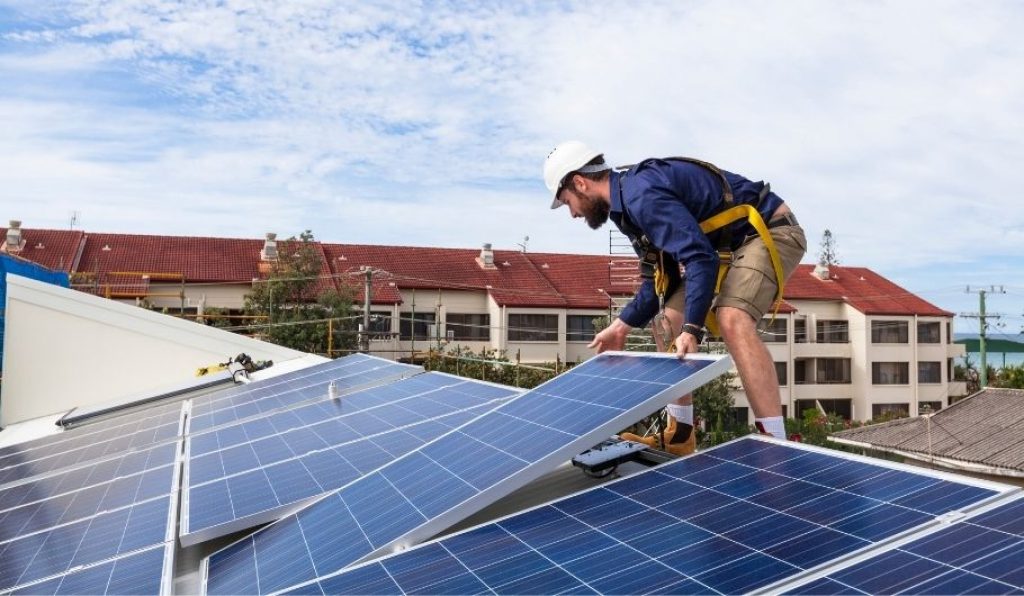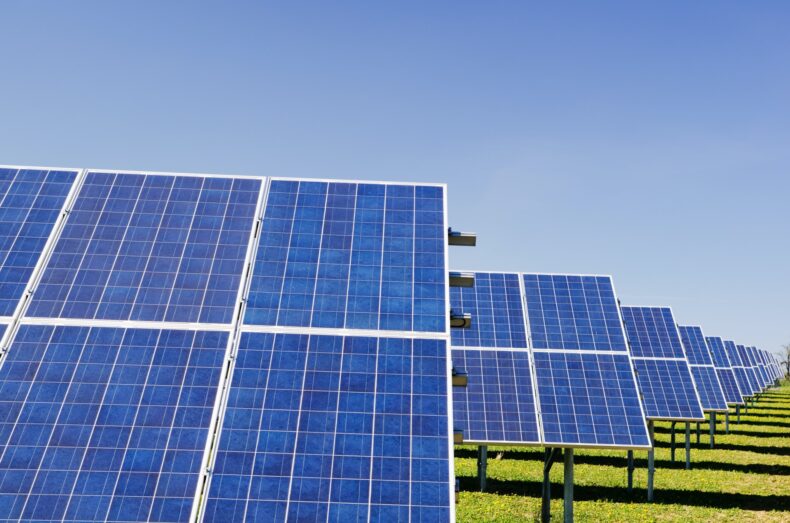You can continuously harvest, store, and use the sun’s energy by setting up a solar system.
This natural source of energy helps us reconnect with nature and limits our impact on the ecosystem – green technology for the win!
Thanks to various technical advancements, this idealistic dream is now accessible to all of us with an installed solar system.
If you want to know everything about setting up a solar system, give this article a good read. It’ll answer your main questions and guide you step-by-step through the design of your own solar system.
Table of Contents
What do you need to set up a solar system?
You will need the following components to set up a solar system:
- Solar panels.
- Charge controller.
- Batteries.
- Inverter.
- Electric safety equipment.
Below, you’ll find the equipment needed to convert the sun’s energy into usable electricity.
Solar panels
A solar panel is one of the market’s most robust energy-producing bits of equipment, with a rated lifetime of 25-30 years. They are produced in many different power outputs, from 5W to 500W and above per unit.
Solar charge controller
A solar charge controller is an incredibly important bit of technology. They regulate the power output from your panels and ensure that they do not overcharge and damage your solar batteries. There are currently two different types on the market: MPPT and PWM. An MPPT charge controller is recommended; they are slightly more expensive but are of much higher quality.
Solar batteries
Store your energy in batteries. They are your key to autonomy. Lithium batteries are recommended. Although more expensive than lead-acid, they are perfect for intermittent charging and are durable, with up to 10 years of service.
Batteries will give your home power during the night and cloudy days.
Inverter
Without an inverter, any electricity produced by your solar system is unusable. Remember, solar panels and batteries work in DC (Direct Current) mode. A quality inverter will convert your DC into AC (Alternative Current), which is the same current all homes use.
We recommend buying a pure sine wave inverter; they are the most efficient.
Electrical safety equipment
Like every electrical system, you will need a fuse box, breaker, switch, sensors, and wires. Get advice from your local electrician for the best wiring size. If you have a little bit more electrical knowledge, feel free to read out article on how to wire a solar panel system.
How to set up a solar system
Here are the 7 steps to setting up your solar system:
- Step 1: Evaluate your production potential.
- Step 2: Evaluate your daily needs.
- Step 3: Design a system for your budget.
- Step 4: Install your solar panels.
- Step 5: Set up your inverter, solar charger, and battery.
- Step 6: Connect your system.
- Step 7: Regulate your electricity consumption to optimize your system.
Step 1: Evaluate your production potential
Your production source is the sun, its output varies greatly depending on your position on the planet.
You can now easily evaluate your energy production potential by entering your location on the global solar atlas.
This will help you to determine an optimal number of solar panels and batteries to cover your daily needs.
Step 2: Evaluate your daily needs
Everyone has different electrical consumption habits – have a look at your monthly consumption in kWh. You will find this information on the bills of your electricity provider.
Step 3: Design a system for your budget
One of the main advantages of solar systems is how scalable they are.
If your budget is limited, start with a system that could cover 30% of your needs. You can upgrade with ease later on by adding solar panels or batteries.
Don’t be shy when purchasing solar panels. They are cheaper than ever and will save you money in the long run. With that being said, limit what you spend on the batteries.
You can start with no batteries and you will be able to enjoy solar production, albeit only during the day.
Step 4: Install your solar panels
Solar panels are the production source of your system. They work best when exposed to full sun. Therefore, be sure that there is no local shade from trees or buildings.
Place them at the optimum tilting angle. Allow a 15 cm space between your panels and the roof for perfect cooling.

Step 5: Set up your inverter, solar charger, and battery
Connect your solar panels to the solar charger (MPPT). Link your batteries with the inverter. Make sure that your solar charger is directly connected to your battery and inverter.
The electricity generated by your solar panels will be transferred to the batteries and to the inverter. Your inverter will then get power directly from the solar panels or from the battery if the solar power is not enough.
Step 6: Connect your system
Most inverters are plug-and-play. After connecting your solar panels and battery to the inverter, all you have to do is link the inverter to your domestic electric system.
Step 7: Regulate your electricity consumption to optimize your system
Optimization is the key to solar energy autonomy.
Even if your system is scaled for 2 to 3 days of autonomy, unpredictable natural events can occur and you might end up with no electricity to cover your needs after 3 or 4 dark days.
Don’t worry your panels still produce under bad weather.
An easy answer would be to increase the number of panels and batteries to cope with extreme climatic events. However, this is clearly not the best solution. Those climatic events might only happen 2 or 3 times per year, and the rest of the time your production will exceed your needs.
If you want to regulate your energy consumption, making a list of your essential appliances:
- Lights.
- USB charging.
- Refrigerator.
- Water pump.
and your non-essential:
- Aircon.
- Electric oven.
- Hair dryer.
- Vacuum cleaner.
Then evaluate the energy consumption of the essential ones. These will be the minimum requirements for your system. During low production days, turn off all non-essential equipment.
In the end, you might reduce your comfort for a few days per year, but your wallet will be happy as your investment in solar panels and batteries will be reduced!
How Much Is A Solar System For A House?
An off-grid solar system with full autonomy for a house will cost, upon purchase 11,538 USD (excluding tax credit), taking into account the amortization of the components, the cost is 969 USD/year.
Below is a summary of the cost for a domestic solar system installed in California, based on the average consumption of a US household (10.7 kWh per day). You will be able to live off-grid with this system, which offers two days of autonomy.
Most of the larger-scale inverters now offer built-in MPPT solar chargers.
| Equipment for solar system | Buying Price | Year of use | Real yearly amortized cost |
|---|---|---|---|
| 8*320W solar panels | $2,592 | 30 | $67 |
| 3*4.8kWh lithium battery | $7,797 | 10 | $780 |
| 3.5kW off-grid inverter all-in-one | $899 | 10 | $90 |
| Electrical wire and safety equipment | $250 | 20 | $13 |
| TOTAL | $11,538 | $969/year | |
| With 22% Tax credit on the panel | $10,968 | $950/year |
Don’t forget that you are eligible for a tax credit on your solar panels. This will further lower the cost of your system. At the time of writing, there is a 26% credit in the U.S.
Let’s compare the annual cost of your system to grid electricity.
The average daily consumption of a U.S. household is 10.7 kWh. In California, 1kWh costs $0.2. Therefore, over one year the electricity bill is 781.
In the end, your autonomous solar system will cost you 180 USD more per year compared to grid electricity.
However, our calculation does not take into account the ever-increasing price of grid electricity (+60% in 10 years in California) and the decreasing price of the batteries (divided by 5 in 10 years!).
In the end, we could expect that within 5 years, autonomous off-grid solar systems will be cost-competitive compared to grid electricity.

